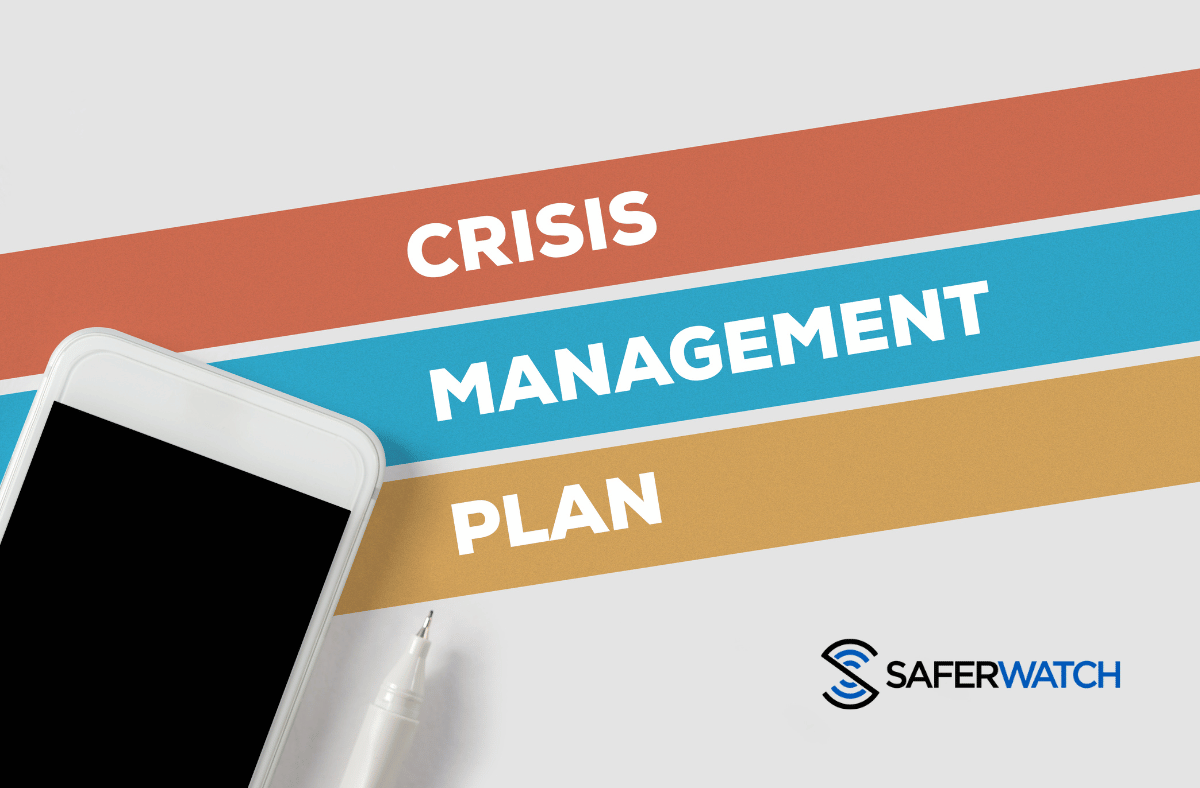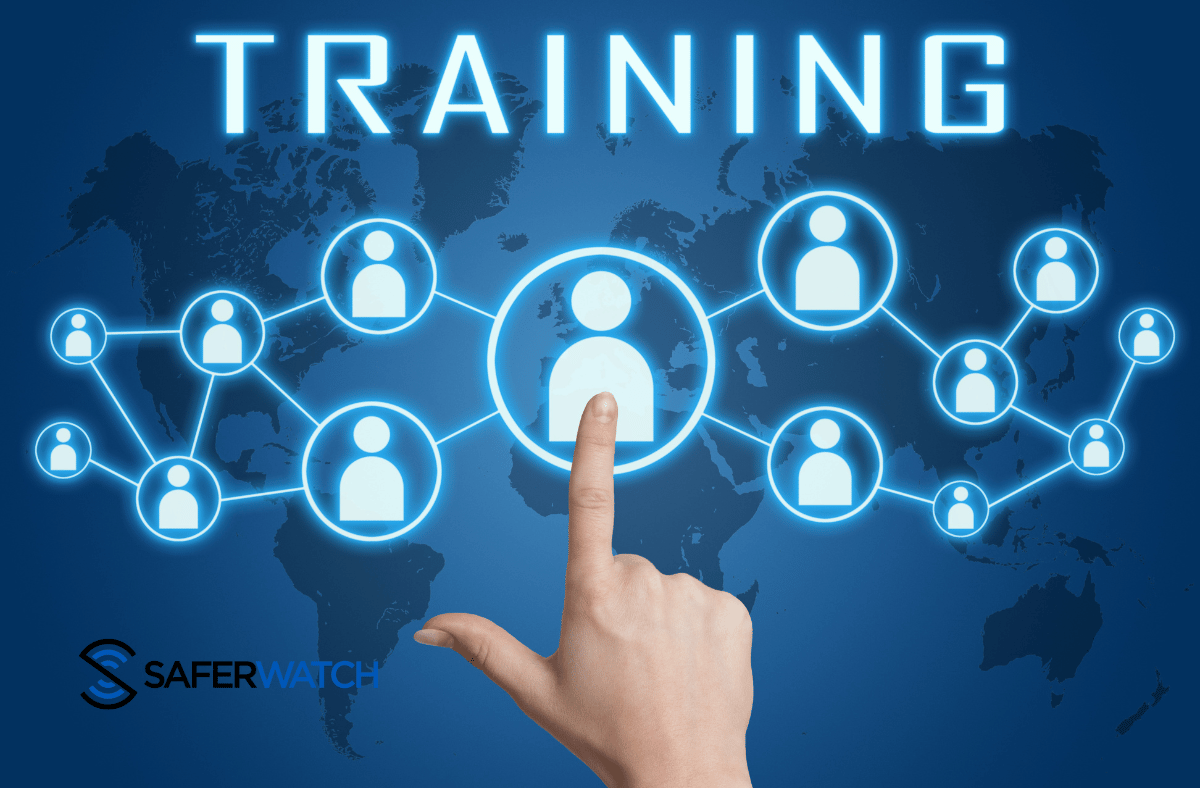Creating an Effective Crisis Management Plan in 2024

Imagine being the CEO of a company facing an unforeseen crisis that threatens its reputation, operations, and bottom line. How prepared are you to handle the situation? A well-crafted Crisis Management Plan (CMP) is a crucial asset for any organization, providing a roadmap for navigating turbulent times and ensuring a swift recovery.
In this blog post, we’ll explore the importance of a CMP, delve into its essential components, and share valuable insights from real-life examples. As well as new technology including incident management apps, mass notification systems, mobile panic alert systems, and threat reporting apps that aid the police.
Quick Summary
- Creating a Crisis Management Plan (CMP) is essential for organizations to effectively respond and recover from unexpected events.
- Key benefits of CMPs include protection, preserving operations, and safeguarding reputation during crises.
- CEOs & senior executives must lead the development & implementation of CMPs with experienced teams including roles/responsibilities, risk assessment/prioritization plans, communication strategies & training drills for preparedness.
Understanding the Importance of a Crisis Management Plan
In a rapidly evolving world, the unexpected can – and often does – happen. Natural disasters, financial crises, and operational accidents are just a few of the potential crises that organizations may face, with a natural disaster being one of the most unpredictable and devastating events.
A well-prepared CMP serves as a valuable guide for navigating these challenges, minimizing damage, and restoring operations quickly. An effective crisis management plan not only addresses the immediate response to a crisis, but also outlines the long-term recovery and restoration of normal business operations. A crisis management plan prepares organizations to face unforeseen events with confidence and resilience.
Key Benefits of a Crisis Management Plan
A well-executed crisis management plan is indispensable to organizations, regardless of size or industry. It facilitates recognition of potential threats, reducing their likelihood, and enhancing response strategies in a crisis management plan (CMP), also known as a crisis plan.
In addition, a well-structured plan protects employees, preserves operations, and safeguards the organization’s reputation during a crisis. The British Standards Institution, for instance, has developed the BS EN ISO 22361:2022 standard for crisis management, which provides guidelines for organizations to follow when a crisis occurs.
These guidelines, along with others such as ISO 22320:2018 for incident management, serve as a foundation for creating customized CMPs that address the unique needs and risks of each organization.
The Role of CEOs and Senior Executives
CEOs and senior management bear the onus of having a CMP in place. Their duty is to ensure the organization’s readiness to handle crises adeptly, reducing potential harm and facilitating swift recovery. The CMP is planned and executed by the crisis management leader and their team. They get specialized support from departments such as business continuity, risk management, and legal.
Jeff Bezos’ delayed response to the warehouse collapse in Edwardsville demonstrates the importance of a well-executed crisis planning process for timely and appropriate responses. A comprehensive CMP should cover various types of crises, such as natural disasters, financial crises, and operational failures, ensuring that organizations are ready to face any challenge that comes their way.
Building Your Crisis Management Team
Forming a multifaceted, proficient crisis management team is key to adeptly managing different crisis dimensions. This team will be responsible for:
- Planning, coordinating, and executing the CMP
- Ensuring that personnel recognize who is accountable during crises
- Working together to mitigate their impact
Organizations can foster a comprehensive strategy to mitigate public impact and expedite disaster recovery by designating a crisis contact with specific responsibilities in each department.
Selecting Team Members
When choosing team members for your crisis management team, consider the following criteria:
- Capacity to manage stress
- Ability to make decisions under pressure
- Effective communication skills
- Experience working with relevant agencies, such as the Federal Emergency Management Agency (FEMA)
- Diverse perspectives and ideas
These qualities are essential for successful crisis management team members.
Selection of team members should be based on an assessment of their skills and experience, along with their ability to handle stress, decision-making prowess, and effective communication skills. Ensuring that your team members have good stress management skills, sound decision-making abilities, and strong communication skills will greatly contribute to the overall success of your CMP.
Defining Roles and Responsibilities
Defining roles and responsibilities in a crisis management plan is crucial for ensuring that each team member knows their part in the plan and can collaborate with stakeholders. The crisis management team is responsible for various tasks, such as:
- Developing and implementing the CMP
- Monitoring and assessing risks
- Analyzing situations and formulating strategies
- Coordinating and communicating with stakeholders
Specifying roles, like allocating social media operations to a core team member, enables your organization to guarantee a well-coordinated crisis response. This clear division of roles and responsibilities will help your crisis management team function efficiently and effectively when it matters most.
Crafting Your Crisis Management Plan: Essential Elements
A proficiently designed CMP integrates key elements like risk evaluation, communication tactics, and plans for response and recovery. These components work together to ensure a comprehensive and effective plan for managing crises and minimizing their impact on your organization.
The command center plan, which delineates the location of the base of operations during a crisis, as well as all pertinent utilities and supplies necessary, is another vital element of a CMP.
Risk Assessment and Prioritization
Risk assessment and prioritization involve identifying potential crises and evaluating them in terms of their probability and severity in order to prioritize them accordingly. The initial step in developing a crisis management plan is performing a risk analysis, which helps organizations anticipate potential risks and plan for their mitigation.
Organizing crises according to probability and severity assists in determining their order of priority when formulating a plan. Financial or liquidity-related crises, technology failures, and operations failures are among the most frequent types of corporate crises. Detecting and prioritizing possible dangers allows organizations to prepare and manage crises more effectively when they occur.
Communication Strategies
During a crisis, communication is key. Communication internally, as well as communication with law enforcement agencies. Ensuring consistent messaging to all stakeholders, both internal and external, helps prevent misinformation and confusion. Social media plays an important role in crisis management, providing companies with the ability to monitor and respond to digital conversations surrounding their business, as well as to disseminate new information to their followers.
Developing a communication strategy in crisis management involves:
- Determining who will serve as the spokesperson for public updates on the crisis
- Determining who will manage the feedback
- Creating fact sheets to provide an overview of the known facts about the crisis
- Setting an information-sharing hierarchy
- Implementing social media and external communication guidelines
These steps allow organizations to handle crisis communications effectively and keep control over their messaging.
Response and Recovery Planning
Response and recovery planning involves creating action plans for each identified risk and outlining steps for restoring normal operations after a crisis has occurred. The development of response and contingency plans is the third step in formulating a crisis management plan. These plans should also take into account regulatory requirements to ensure compliance during the execution of a crisis response plan.
The chain of command for a crisis management plan should be clearly defined for consistency and organization. Generally, the plan should include multiple levels of command, such as a company-wide crisis response leader and lower-level leaders at each company location. Setting a clear command chain and defining response procedures for every potential risk enables your organization to guarantee a swift, effective crisis response.
Training and Evaluation: Ensuring Preparedness
Training and assessment are key to ensuring preparedness and the effectiveness of the CMP. Regular review and revision of the plan, as well as assigning resources to staff, including time for training and financial investment, are critical to guarantee the efficacy of the CMP.
Frequent assessment of the crisis response team and incident response team lists ensures they remain up-to-date and prepared to act promptly.
Conducting Drills and Simulations
Drills and simulations in a Crisis Management Plan are exercises designed to evaluate the effectiveness of the plan in responding to a crisis situation. These exercises involve:
- Creating realistic scenarios
- Simulating the crisis event
- Assessing the coordination, communication, and response capabilities of the crisis management team
- Practicing roles and responsibilities
- Identifying any potential gaps in the plan
- Enhancing the overall preparedness for managing a crisis
These drills and simulations provide an opportunity to enhance the overall preparedness for managing a crisis.
Conducting frequent drills and simulations, like tabletop exercises and role-playing, is vital to ensure team members understand their roles and can collaborate efficiently during a crisis. It is recommended to conduct these exercises on a quarterly basis to maintain readiness.
Reviewing and Updating Your Plan
The Crisis Management Plan should ideally be reviewed and updated annually to ensure its relevance and inclusion of insights from previous crises and industry benchmarks. The process for gathering key stakeholders’ input generally entails identifying stakeholders, engaging with them, and incorporating their feedback into the plan.
Performing a risk assessment is a crucial part of the review process, as it involves identifying potential risks, evaluating the probability and effect of each risk, and formulating strategies to reduce or eliminate the risks. Incorporating lessons learned from past crises and recognizing areas of improvement are also essential steps in the review and update process.
Real-Life Examples of Crisis Management Plans in Action
Real-life examples of crisis management plans in action provide valuable insights into the importance of having a well-prepared CMP and the potential consequences of poor crisis management. For instance, the response of Southwest Airlines CEO, Gary Kelly, to a passenger’s death on Flight 1380 showcased the company’s genuine remorse and commitment to supporting the affected passengers and their families.
On the other hand, United Airlines’ initial response to Dr. David Dao’s forceful removal from a flight was widely criticized, leading to negative social media reactions and calls for a boycott. The company later accepted responsibility and outlined changes being implemented to prevent similar incidents in the future. These examples demonstrate the significant impact that effective crisis management can have on an organization’s reputation and overall success.
Tips for Implementing a Successful Crisis Management Plan
To implement a successful CMP, meticulous planning and attention to detail are required. Begin by identifying the goals of the plan and involving all relevant stakeholders in its development. Create a hierarchy for sharing information during a crisis, ensuring that all team members and stakeholders are kept informed and up-to-date with the latest developments.
Establish guidelines for social media and external communication to maintain control over your organization’s messaging during a crisis. Regular training and evaluation, along with periodic review and updating of the plan, will ensure its effectiveness and preparedness for any potential crises.
Adherence to these tips will equip your organization to tackle any potential crisis.
Full Summary
A well-prepared Crisis Management Plan is an invaluable asset for any organization facing potential crises. By understanding its importance, building a skilled crisis management team, incorporating essential elements, and regularly reviewing and updating the plan, your organization can navigate unexpected challenges and minimize damage.
Real-life examples of crisis management plans in action serve as powerful reminders of the significant impact that effective crisis management can have on an organization’s reputation and overall success. With a well-crafted CMP in place, your organization will be poised to face any challenge and emerge stronger than ever.
Frequently Asked Questions
What is included in a crisis management plan?
A crisis management plan outlines how your business will react in case of a crisis, including assigning roles to key personnel to minimize damage and restore operations quickly. It identifies who will take action and what their roles will be, as well as providing instructions and communication strategies for managing the crisis effectively.
The plan should include a list of potential crises that could occur, such as natural disasters, cyber-attacks, or data breaches. It should also include a list of key personnel and their roles in the event of a crisis, as well.
What are the 5 P’s of crisis management?
The 5 P’s of Crisis Management are Predict, Prevent, Prepare, Perform, Post-Action and Assessment. This framework involves trying to remove uncertainty from the future by updating inputs, intelligence about possible threats, knowing possible targets and knowing vulnerabilities.
It also covers the performance of the organization during the crisis and post-action evaluation.
What are the six stages of a crisis plan?
The six stages of a crisis plan are Warning, Risk Assessment, Response, Management, Resolution and Recovery.
What are the key benefits of a Crisis Management Plan?
Having a Crisis Management Plan provides numerous benefits, such as identifying threats, minimizing likelihood of damage, improving response, protecting employees, preserving operations, and safeguarding reputation.
How often should a Crisis Management Plan be reviewed and updated?
It is recommended to review and update the Crisis Management Plan at least annually for optimal effectiveness.
SaferWatch In the News:
- Motorola Solutions and SaferWatch Align to Support School Safety
- App Developed for Educators In Case of A School Shooting
- BCPS Unveils Alyssa’s Alert In New Initiative To Add Additional Layer of Security for Students and Staff
- Stand With Parkland Partners With SaferWatch Mobile App to Protect Schools
- Alyssa’s Law Reviewed by MSD Commission
- BCPS uses SaferWatch app to comply with Alyssa’s Law
- BSO: 12-Year-Old Boy Arrested For Making School Shooting Threat
- Fort Lauderdale Police Investigate Three School Threats



























